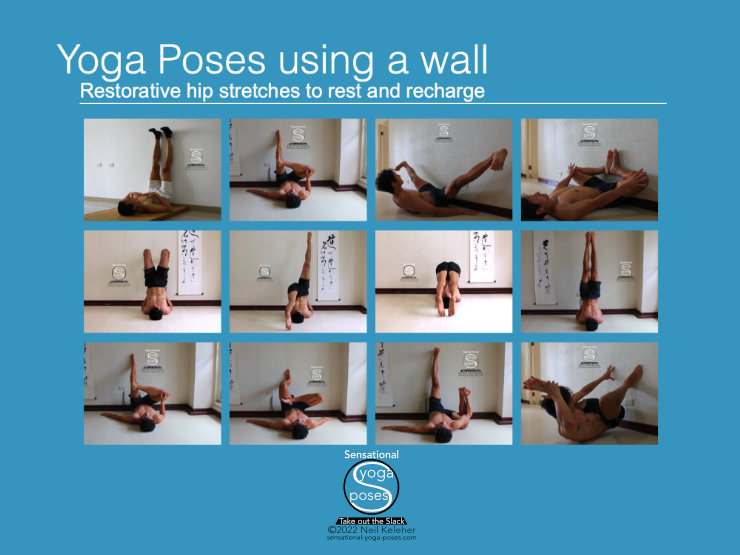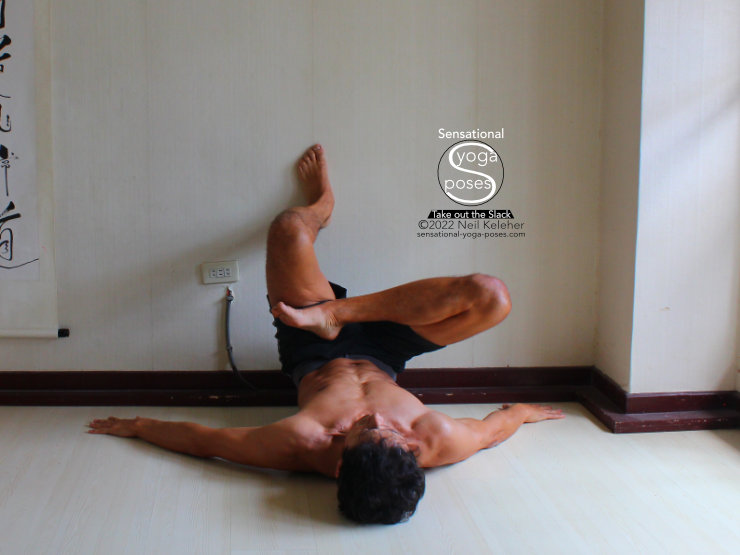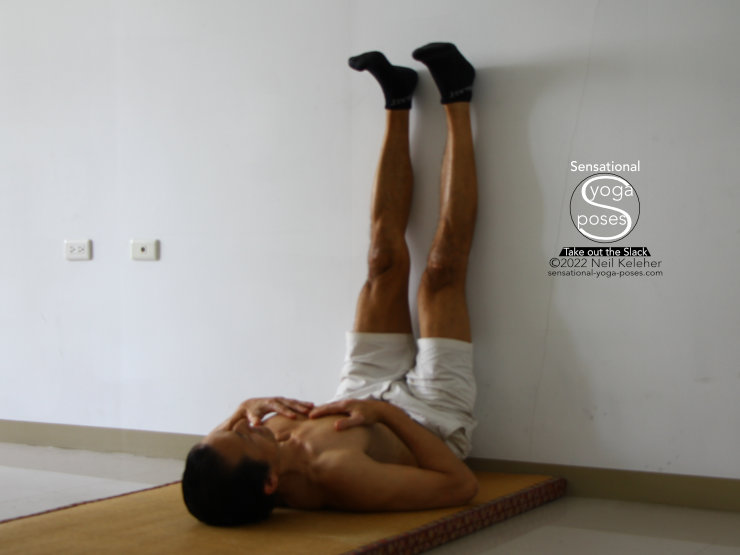
Legs up the wall

Legs wide adductor stretch
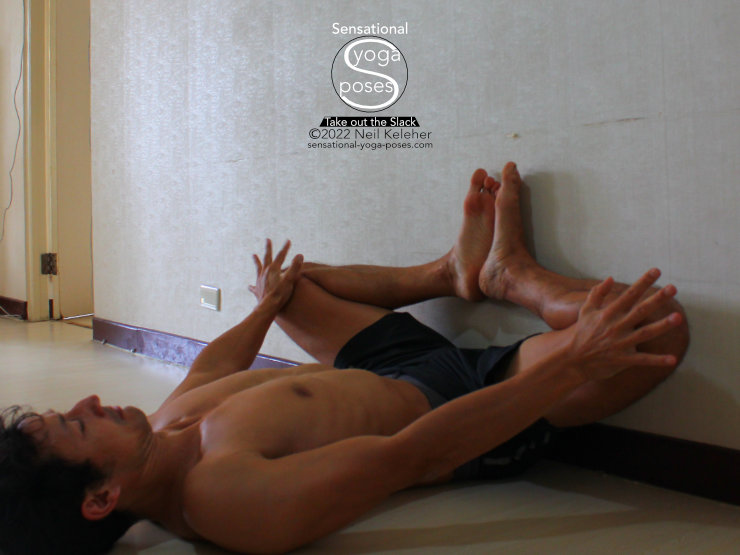
Butterfly pose (bound angle)
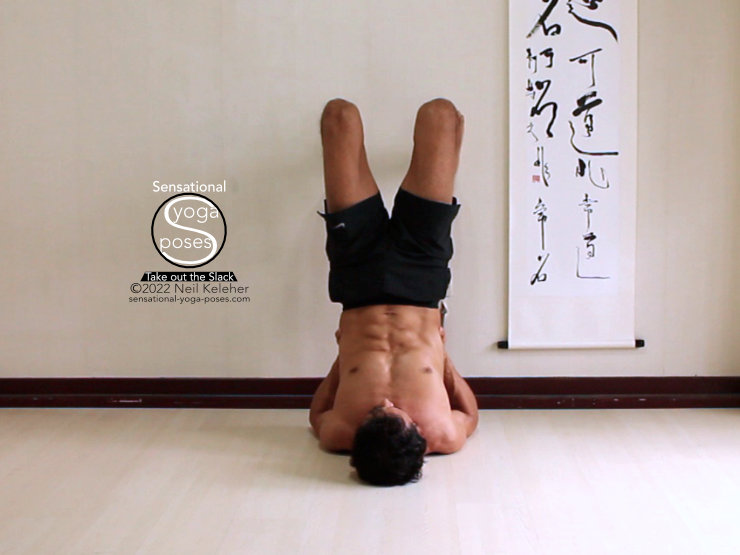
Shoulderstand, feet against wall
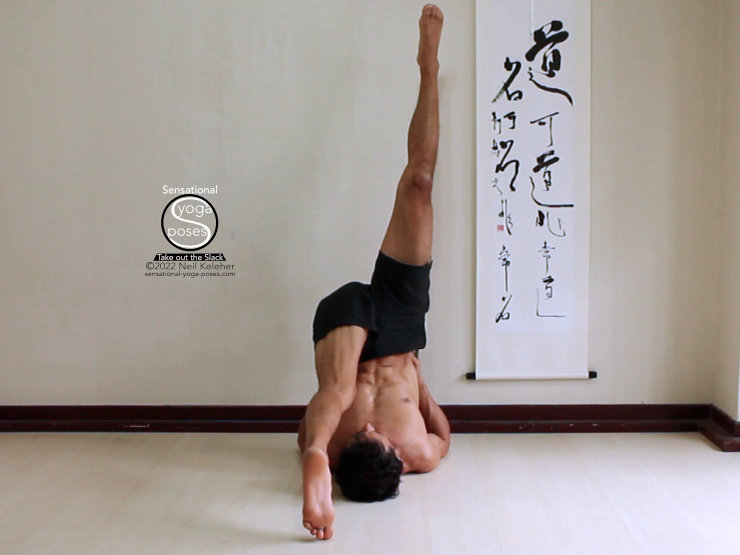
Shoulder stand splits using wall
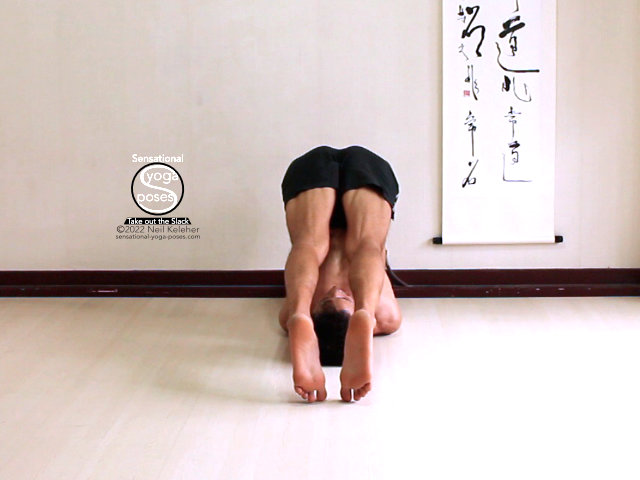
Plough pose
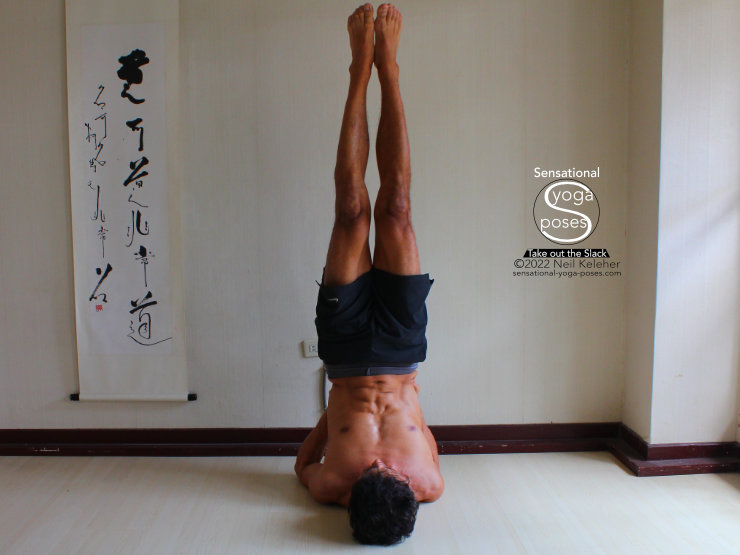
Shoulder stand, from wall
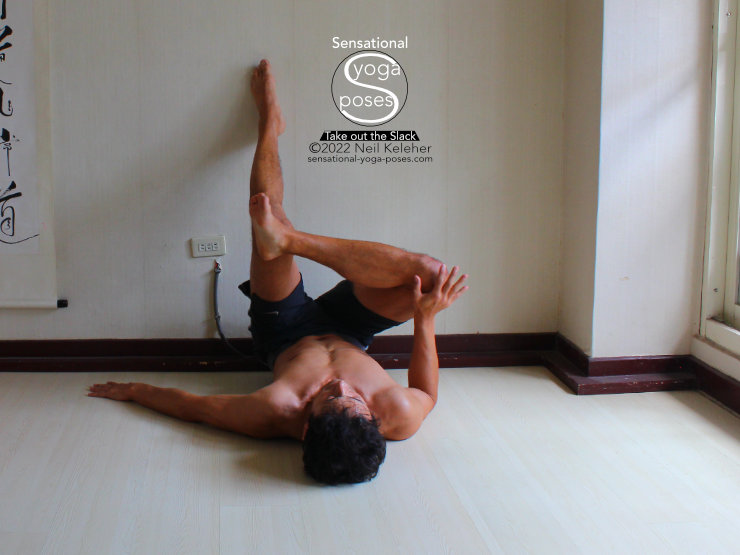
Hip stretch using a wall
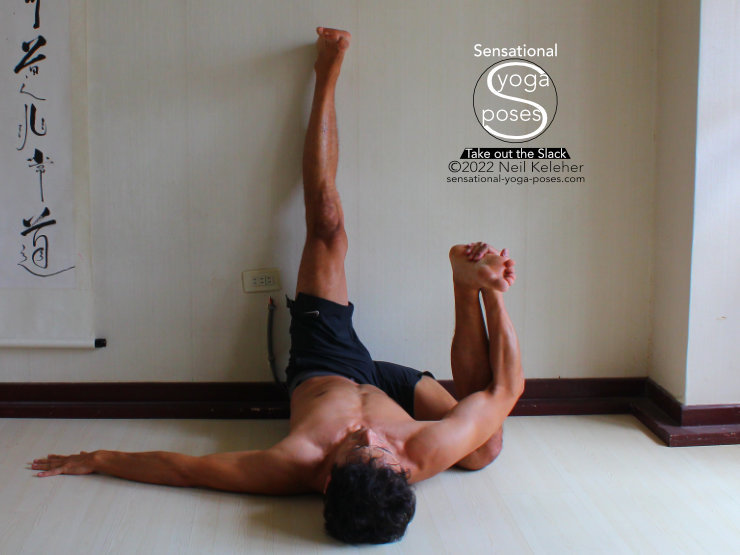
Happy baby hip stretch using wall
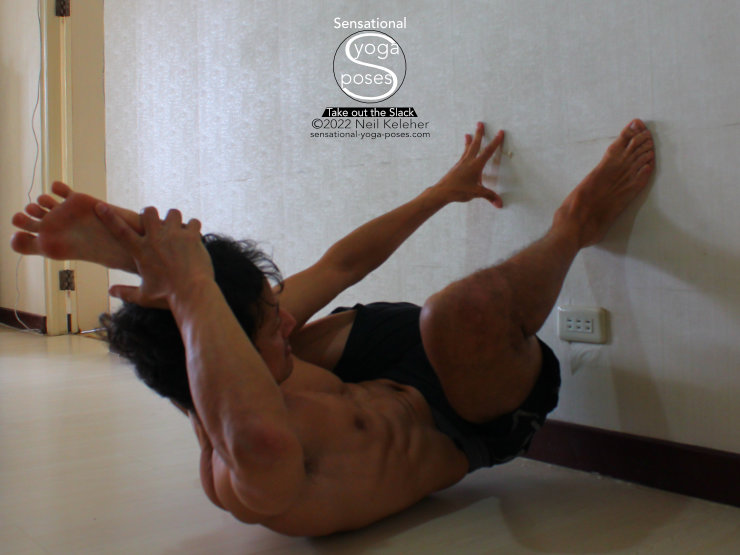
Foot behind head using wall
When I'm feeling tired but still want to do yoga (or have to teach it) then one of my favorite options is to start laying on my back with my feet up the wall.
Because I've been working on side splits for a while I thought that my legs should be a bit more open when doing side splits with legs up. Since my legs aren't that wide while upside down my option was to practice moving within the pose. In this case, that meant pulling my legs away from the wall (activating my hip flexors) and also lifting head and chest (activating my abs.) Then I relax back down and then repeat. By adding tension and then releasing it I found that my legs got wider quicker than if I just layed on the ground and did nothing.
For some variation, when lifting your chest (and arms) you can reach towards one leg and then the other.
Additionally, instead of pulling your legs away from the wall, you can also experiment with pressing them into the wall.
And if you like, you can also try pulling your legs away from the wall while keeping your upper body on the ground.
Explore the possibilities and see what works for you.
You can do butterfly yoga pose sitting upright against a wall. But in this instance you can also do it while laying on your back with your feet on the wall.
You can then use your hands to help press your knees towards the wall.
Butterfly pose stretches the inner thighs in a slightly different way that wide legged splits.
You might find that doing shoulder stand yoga pose using a wall is even more of a restorative pose since the torso as well as the legs are inverted.
Doing it against the wall you can use the wall to help get your hips up and so even getting up into the pose doesn't require to much effort.
For the following shoulder stand variations, pick and choose what feels right for you. Leave out what you can't do or gradually work towards it.
If you can't touch your feet to the floor behind your for plough pose, bend your knees and rest them on your forehead if if possible. Or put a chair behind you and place your feet on that instead.
Using your legs against the wall to help lift your pelvis, you can bend one knee and then the other and bring them one at a time towards your chest.
- From there straighten one leg behind you.
- If possible touch the foot to the floor.
- Then reach the other leg up and back, touching it to the wall.
Support your lower back with your hands as you do so.
Work at making both your legs feel long, and you might also find it helps to activate your side glutes (gluteus minimus and medius).
You may get some twisting of your pelvis to facilitate touching both floor and wall, and that could be fine to begin with, but once you do have foot contact you could experiment with squaring your hips.
At first, you might find it helpful to hold only for a few breaths and then switch. Then repeat if you like, working gradually toward longer holds.
Either after or before splits, you could also do plow pose (plough), touching your feet to the floor behind you.
You may have to move slighlty away from the wall to clasp your hands behind you, or improvise and grab the sides of your mat if you are using one. Or keep your hands where they are, supporting your lower back.
If you can get your feet to the floor, play around and walk your feet (or pull them) towards your head and then away from your head. You may notice an change in the curve of your spine as you walk your feet one way and then the other.
You might find that with your feet closer to your head you stretch your lower back (by bending it forwards.
From plow pose (or before it) you can also go into shoulderstand.
You can play around in shoulderstand by gradually moving your pelvis and legs forwards and backwards so that you move your center of gravity towards your head and away from it.
Moving your center of gravity towards you head, try pressing your head down more so that you engage your neck extensors (the muscles that act on the back of the neck.) Moving your center back (towards the wall) you can position your center over your shoulders so that your neck can relax.
Move slowly so that you can stop yourself if you find yourself going to far. And if you don't feel comfortable with "weight shifting" then focus on keeping your weight over your shoulders.
Balance Basics contains more details on learning to feel your center of gravity and control it.
To get back down using the wall, place one foot then the other against the wall so that you can stay balanced until you get a foot on the wall. Then use your legs against the wall to slowly lower yourself down.
You've probably seen or done the runners stretch or glute stretch when you have one ankle on the opposite knee and then you pull the knee towards you. Using a wall you can do a more relaxed version of that stretch.
Place one ankle over the other knee then gradually move the supporting leg foot down the wall to increase the stretch.
Use a hand on the knee with the elbow on the floor to increase the stretch.
From here a possible progression is lotus pose with one leg.
- To get a foot into lotus you may find it helpful to press your legs against the wall to help lift your hips.
- Then bend one knee and gently move pull it so that the blade of the foot is as close as possible to the opposite hip crease.
- If your pelvis is still lifted, relax the other leg so that your hips sink down to the floor.
- You can keep the non-lotus leg straight, or gradually bend it to better "seat" the lotus leg foot.
I just recently started working on foot behind the head and one of my preparation poses is to lay on my back and do happy baby pose one foot at a time.
The same pose can be done against a wall.
With one leg straight up, grab the other foot, bend the knee and pull on the foot to pull the knee to the floor beside the ribcage.
I like to have my other hand out to the side. And to help the opposite side pelvis sink down you can reach your straight leg to the side. You may get an inner thigh stretch as an extra added bonus.
After the happy baby variation take a rest and then try to get your shoulder in front of the thigh and your shin or ankle behind your head. Work slowly and gradually and rest when you need to. I like to find a position close to the limits of comfort and wait.
The nice thing about doing this pose close to the wall is that you can touch the wall with foot and hand and use it to reposition your body. You can try touching your knee to the floor and use the wall to help keep you there. Or you can use it to help stop you from rolling side to side as you wiggle into position.
Try using your shoulder to help push down on the leg. Try to relax your hip. And don't worry if some days you seem to regress.
Work gradually towards getting your shin behind your head.
You may find that you feel quite pleasant when you rest after doing this pose.
At this point you might choose to come away from the wall.
Published: 2013 04 10
Updated: 2022 02 18
